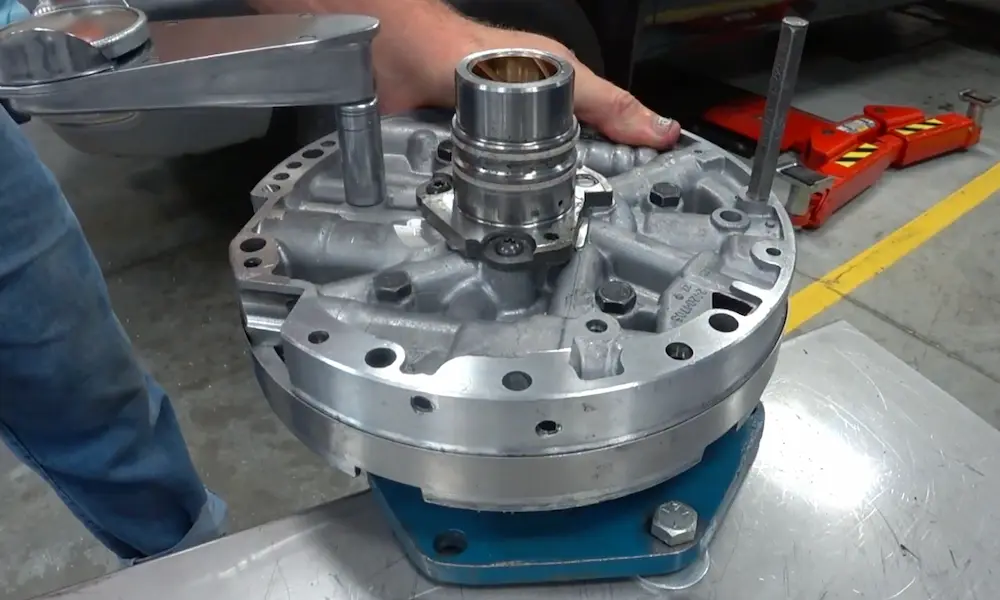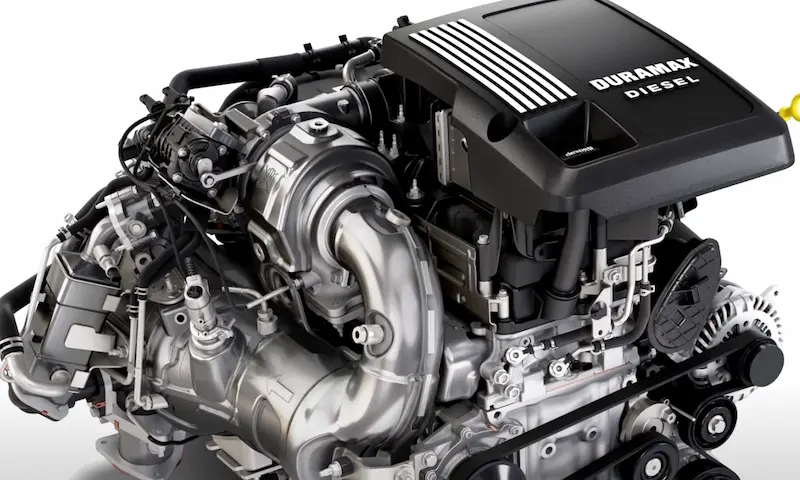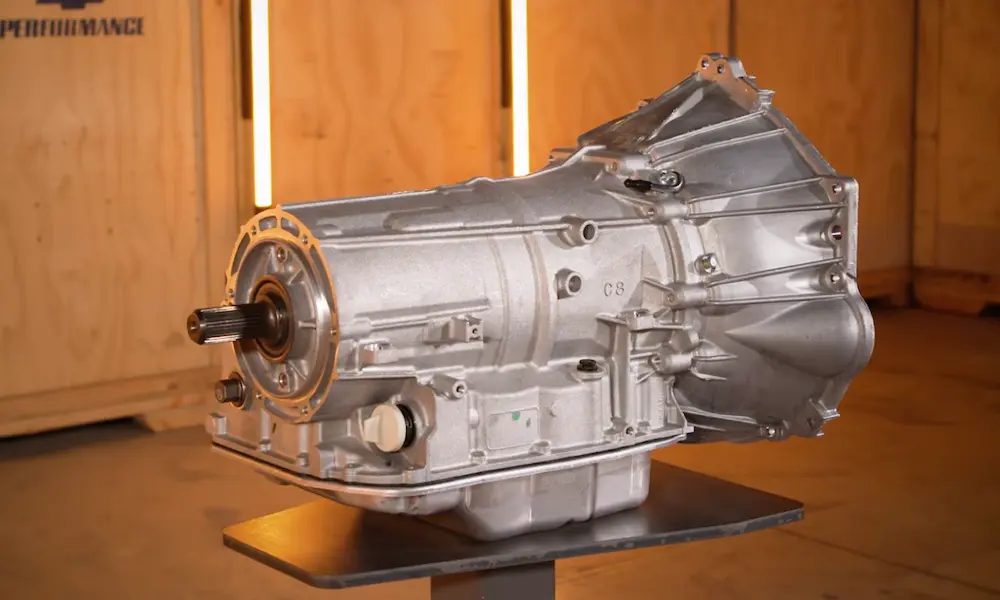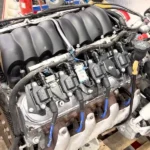You’ve probably spotted the “Vortec 5300” badge on GM trucks and SUVs from the late 2000s and early 2010s. Behind that badge often sits the LC9 engine – an aluminum block 5.3L V8 that balances power, efficiency, and reliability. Whether you’re researching for a potential purchase, troubleshooting your vehicle, or considering an engine swap, this complete guide covers everything about this popular GM powerplant.
What Is the LC9 Engine?
The LC9 is a 5.3-liter V8 engine from General Motors’ Gen IV LS family. Built between 2007 and 2014, it’s essentially a flex-fuel version of the LH6 engine that can run on either regular gasoline or E85 ethanol. What sets it apart from other 5.3L variants is its lightweight aluminum block construction, which shaves about 88 pounds compared to iron block versions.
This engine primarily powered GM’s full-size trucks and SUVs like the Chevrolet Silverado, Tahoe, Suburban, and their GMC counterparts during the GMT900 platform years.
LC9 Engine Specs at a Glance
Here’s a quick rundown of the key LC9 engine specifications:
| Specification | Details |
|---|---|
| Displacement | 5.3L (325 cubic inches) |
| Configuration | 90° V8 |
| Block Material | Aluminum |
| Cylinder Heads | Aluminum with cathedral ports |
| Bore × Stroke | 3.78″ × 3.62″ (96mm × 92mm) |
| Compression Ratio | 9.9:1 (2007-2009), 9.6:1 (2010-2011) |
| Horsepower | 315-326 hp (depending on fuel type) |
| Torque | 335-348 lb-ft (depending on fuel type) |
| Redline | 6,000 RPM |
| Fuel System | Sequential fuel injection |
| Production Years | 2007-2014 |
LC9 Power and Performance Figures
When it comes to performance, the LC9 delivers solid numbers for a truck/SUV engine of its era. The exact output varies slightly depending on the model year and whether it’s running on gasoline or E85:
Horsepower:
- 315 hp at 5,200 RPM (regular unleaded)
- 320-326 hp at 5,300-5,400 RPM (E85)
Torque:
- 335-338 lb-ft at 4,000-4,400 RPM (regular unleaded)
- 348 lb-ft at 4,400 RPM (E85)
This power and torque profile gives vehicles equipped with the LC9 strong acceleration and towing capability while maintaining reasonable fuel efficiency for a V8 of this size.
LC9 Engine Block and Rotating Assembly Details
The foundation of the LC9 is its aluminum block, which offers significant weight savings over iron blocks. This helps improve the vehicle’s overall weight distribution and fuel economy without sacrificing strength.
The block features a deep-skirt design with six-bolt, cross-bolted main bearing caps that enhance rigidity and durability. This design limits crankshaft flex and contributes to the engine’s ability to handle significant power increases when modified.
Key rotating assembly components include:
- Cast nodular iron crankshaft with undercut and rolled fillets
- Powder metal connecting rods
- Cast aluminum pistons
- Powder metal main bearing caps
The block was cast with multiple casting numbers throughout production, including 125771048, 12601900, 12569513, and 12568573.
Cylinder Heads and Valvetrain Components
The LC9 uses aluminum “cathedral port” cylinder heads, named for the distinctive arched shape of the intake ports. These heads (casting #243/799) offer excellent flow characteristics that provide strong low-end torque while still allowing good high-RPM breathing.
Valvetrain specs include:
- Overhead valve (OHV) configuration
- 2 valves per cylinder (16 valves total)
- Hydraulic roller lifters
- Hollow steel camshaft
- Variable Valve Timing (added in 2010-2011 models)
The valvetrain design is relatively simple compared to overhead cam engines, contributing to the LC9’s reputation for reliability and easy maintenance.
Advanced Technologies in the LC9 Engine
Despite being developed over 15 years ago, the LC9 incorporated several advanced technologies that were quite innovative for truck engines at the time:
Active Fuel Management (AFM)
This cylinder deactivation system temporarily shuts down four cylinders during light load conditions like highway cruising. By running as a V4 in these situations, the engine can improve fuel economy by up to 6%. The system transitions between V8 and V4 modes in less than 20 milliseconds, making the change virtually undetectable to drivers.
Variable Valve Timing (VVT)
Added to the LC9 in 2010, VVT dynamically adjusts camshaft timing based on engine speed and load. This provides multiple benefits:
- Improved idle stability
- Enhanced low-end torque
- Better high-RPM power
- Reduced emissions
- Improved fuel economy
E85 Flex Fuel Capability
Unlike some other 5.3L variants, the LC9 can run on both regular unleaded gasoline and E85 ethanol fuel (85% ethanol, 15% gasoline). The engine’s sensors detect the fuel blend and adjust timing and fuel delivery accordingly. E85 actually produces slightly more power and torque than gasoline in this engine.
Electronic Throttle Control
The LC9 uses a “drive-by-wire” throttle system with no mechanical connection between the gas pedal and throttle body. This allows for more precise throttle control and integration with systems like cruise control and stability control.
LC9 Engine Applications and Production History
The LC9 engine was installed in numerous GM trucks and SUVs from 2007 through 2014. Here’s a breakdown of the vehicles that came equipped with this engine:
- 2007-2011: Chevrolet Avalanche
- 2007-2011: Chevrolet Silverado 1500
- 2007-2011: GMC Sierra 1500
- 2007-2011: Chevrolet Suburban
- 2007-2011: GMC Yukon XL
- 2009-2010: GMC Yukon
- 2009-2011: Chevrolet Tahoe
- 2006-2014: Chevrolet Suburban 4WD (GMT900)
- 2006-2014: GMC Yukon XL 4WD (GMT900)
The engine was assembled at two main plants: Romulus, Michigan, USA and Silao, Mexico. In most applications, it was paired with GM’s 6L80 six-speed automatic transmission.
Common LC9 Engine Problems and Reliability
While generally considered reliable, the LC9 engine does have some common issues owners should be aware of:
Active Fuel Management Problems
The AFM system has been known to cause issues in some LC9 engines, particularly:
- Excessive oil consumption due to AFM lifter failure
- Collapsed lifters leading to camshaft damage
- Valve cover gasket leaks from increased crankcase pressure
Many owners choose to disable AFM using aftermarket tuning or conversion kits to prevent these issues.
Oil Consumption
Some LC9 engines develop oil consumption issues as they age, which can be related to valve guide wear, piston ring seating, or the AFM system. Regular oil level checks are recommended, especially in higher mileage engines.
Timing Chain Wear
The timing chain can stretch over time, leading to warning lights, poor performance, or rattling noises. This typically occurs on higher mileage engines (150,000+ miles) and is considered a maintenance item rather than a design flaw.
Spark Plug and Wire Maintenance
The coil-near-plug ignition system can be troublesome if not maintained properly. Spark plug wires can deteriorate from the significant heat generated by the engine, causing misfires or rough running.
Despite these potential issues, the LC9 is generally regarded as a durable engine that can easily exceed 200,000 miles with proper maintenance.
Performance Upgrades and Modification Potential
One of the biggest advantages of the LC9 engine is its relation to the legendary LS engine family, which has extensive aftermarket support for performance modifications. Here are some popular upgrades:
Mild Performance Upgrades
For those looking for moderate gains while maintaining reliability:
- Cold air intake: 10-15 hp gain
- Performance exhaust system: 10-20 hp gain
- Tuner/programmer: 20-30 hp gain
- Camshaft upgrade: 30-50 hp gain
Serious Performance Modifications
For those seeking significant power increases:
- Cylinder head porting/aftermarket heads: 30-50+ hp
- Stroker kits (increasing displacement): 50-100+ hp
- Forced induction (supercharger/turbocharger): 100-300+ hp
The aluminum block of the LC9 can safely handle overboring to 3.800 inches (+.020) for boosted applications. With proper machining, it can potentially be taken to 3.905 inches. Combined with a 4.000-inch stroke, this can increase displacement to 383 cubic inches.
With appropriate supporting modifications, the LC9 block has been known to support up to 850+ horsepower at the wheels. Head and main studs are recommended for applications exceeding this level.
LC9 vs. Other GM 5.3L V8 Engine Variants
GM produced several 5.3L variants during the same era as the LC9. Here’s how they compare:
| Engine | Block Material | Fuel Type | Key Differences |
|---|---|---|---|
| LC9 | Aluminum | Flex-fuel (gasoline/E85) | Active Fuel Management, VVT (2010+) |
| LH6 | Aluminum | Gasoline only | Similar to LC9 but without flex-fuel capability |
| LY5 | Iron | Gasoline only | Heavier than LC9 due to iron block |
| LMG | Iron | Flex-fuel (gasoline/E85) | Iron block version of the LC9 |
| L59 | Iron | Flex-fuel (gasoline/E85) | Earlier Gen III version without AFM |
Understanding these differences is important when researching vehicles or considering engine swaps. The aluminum block of the LC9 makes it particularly desirable for performance builds where weight is a concern.
Fuel Economy and Efficiency Features
Despite its V8 configuration, the LC9 incorporates several features to improve fuel efficiency:
- Active Fuel Management cylinder deactivation
- Variable valve timing (in later models)
- Lightweight aluminum construction
- Advanced electronic engine management
In typical applications, vehicles equipped with the LC9 engine achieved approximately:
- 14-16 MPG city
- 19-22 MPG highway
- 16-18 MPG combined
These figures were competitive for full-size trucks and SUVs of the era, though they vary significantly based on vehicle configuration, driving habits, and whether the vehicle is operating in 4WD.
Oil, Coolant, and Fluid Specifications
Proper fluids are essential for LC9 engine longevity. Here are the recommended specifications:
Engine Oil:
- Capacity: 6.0 quarts with filter change
- Type: 5W-30 synthetic blend (recommended)
- Change interval: Every 5,000-7,500 miles
Coolant:
- Capacity: Approximately 16.5-17 quarts (system total)
- Type: Dex-Cool orange long-life coolant
- Change interval: Every 5 years or 150,000 miles
Transmission Fluid (when paired with 6L80):
- Capacity: Approximately 6.3 quarts after drain and fill
- Type: DEXRON VI automatic transmission fluid
- Change interval: Every 45,000-100,000 miles (severe vs. normal use)
Using the correct fluids and following recommended maintenance intervals can significantly impact the longevity and performance of the LC9 engine.
LC9 Engine Swaps and Compatibility
The LC9’s lightweight aluminum construction and strong power output make it a popular choice for engine swaps into older vehicles. Here are some key considerations for LC9 swaps:
Mounting and Fitment:
The LC9 uses standard LS motor mounts and can fit into most vehicles that accept other LS engines. Aftermarket motor mount kits are widely available for popular swap applications like:
- Classic Chevrolet cars (Camaro, Nova, etc.)
- S10/S15 trucks and Blazers
- Jeep Wrangler
- Various hot rods and custom builds
Electronics and Wiring:
The LC9’s engine control system is more complex than older V8s due to features like:
- Drive-by-wire throttle
- Active Fuel Management
- Variable valve timing (in later models)
Most successful swaps use either:
- Complete standalone aftermarket engine management systems
- Modified factory ECM with custom programming
Transmission Options:
The LC9 is compatible with numerous transmissions:
- Factory 6L80 automatic
- Older GM automatics (4L60E, 4L80E) with adapter
- Manual transmissions (T56, TR6060) with proper flywheel/clutch
When planning an LC9 swap, it’s worth noting that many builders choose to disable the Active Fuel Management system for simplicity and reliability in custom applications. This can be done through aftermarket tuning software or AFM delete kits.
LC9 Engine Identification
If you’re trying to confirm whether you have an LC9 engine or another 5.3L variant, here are the key identifiers:
Visual Indicators:
- Aluminum block (light silver color vs. darker iron blocks)
- “Vortec 5300” badging
- Engine oil dipstick located at rear of engine
- Flex fuel capability badging on vehicle
Engine Code Location:
The 8th digit of the VIN will be “T” for 2007-2009 LC9 engines or “J” for 2010+ LC9 engines with VVT.
RPO Code:
Look for the “LC9” RPO code on the service parts identification label, typically located in the glove box or driver’s door jamb.
Block Casting Numbers:
Common LC9 block casting numbers include 125771048, 12601900, 12569513, and 12568573.
Maintenance Tips for LC9 Engine Longevity
To get the most life from an LC9 engine, follow these maintenance best practices:
- Use quality oil and change regularly
The AFM system can be tough on oil, so regular changes with high-quality oil are essential. - Keep cooling system in top condition
Aluminum blocks are more sensitive to overheating than iron blocks. Maintain the cooling system and address any temperature concerns promptly. - Address oil consumption promptly
If you notice increased oil consumption, don’t ignore it. This can be an early warning of AFM system issues. - Consider AFM deletion for high-mileage engines
Many owners report improved reliability after disabling the Active Fuel Management system on high-mileage engines. - Use fuel system cleaners periodically
Carbon buildup can affect performance. Periodic use of quality fuel system cleaners can help maintain injector performance. - Check spark plugs at recommended intervals
The LC9’s ignition system works hard. Checking and replacing spark plugs at the recommended intervals prevents performance problems. - Listen for timing chain noise
Any rattling from the front of the engine could indicate timing chain wear, which should be addressed before it causes more significant problems.
With proper care, an LC9 engine can easily exceed 200,000 miles while maintaining good performance and reliability.
The LC9’s Legacy and Impact
The LC9 engine represents an important step in GM’s powertrain development. Its aluminum construction, cylinder deactivation, and eventually variable valve timing showcased technologies that would become standard in later generations of GM engines.
The engine struck an excellent balance between power, efficiency, and reliability that made it popular in GM’s truck and SUV lineup. Its lightweight design also made it a favorite for engine swap enthusiasts looking for modern performance in classic vehicles.
While newer GM small-block engines have surpassed it in technology and output, the LC9 remains a solid, proven powerplant with extensive aftermarket support and a strong reputation among enthusiasts.
For those looking to purchase a used GM truck or SUV from this era, vehicles equipped with the LC9 engine offer a good combination of performance and potential longevity when properly maintained.















